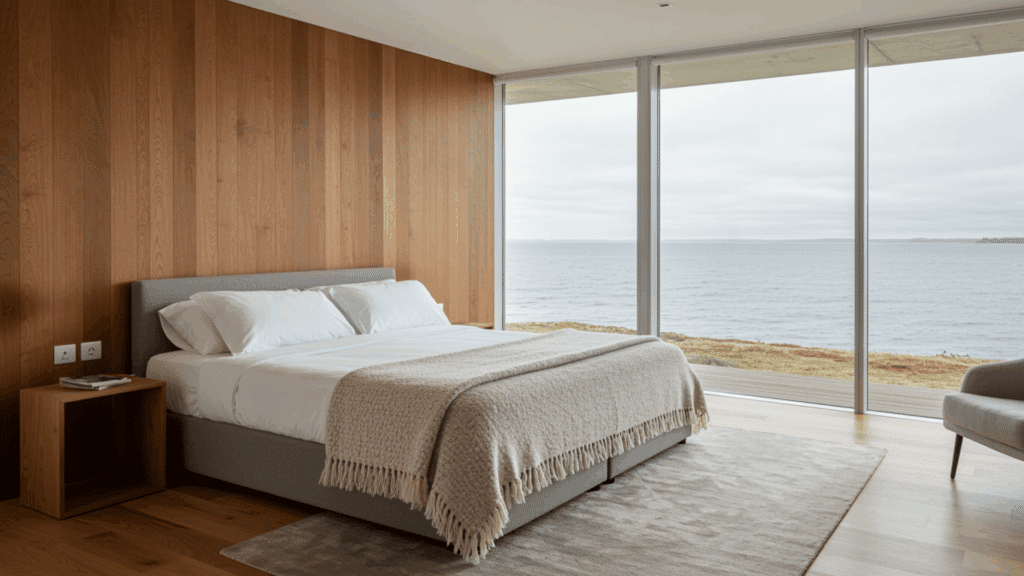Ready to change your bedroom into a peaceful sanctuary? Let’s check out how ancient wisdom can improve your modern sleep space.
Creating a restful bedroom goes beyond picking nice sheets and fluffy pillows. A feng shui bedroom layout focuses on arranging your space to welcome positive energy.
When energy moves smoothly through your bedroom, and wake up feeling refreshed. Even if you’re dealing with restless nights.
Your journey to deeper, more restorative sleep starts with understanding how your room’s layout impacts your rest.
What is Feng Shui?
Feng shui is an ancient Chinese practice that dates back thousands of years. The term translates to “wind and water,” representing how energy flows through spaces.
This philosophy holds that everything around us carries an energy called “chi.” When chi moves freely through your home, it brings balance, harmony, and good fortune.
Feng shui uses specific guidelines about placement, colors, and elements to create environments that support your well-being.
In bedrooms, these principles focus on promoting rest and rejuvenation. The practice isn’t about strict rules but working with your space to create the most supportive environment.
Understanding these basic concepts helps you make intentional choices about your bedroom layout.
What is the 3-5-7 Rule in Decorating Feng Shui?
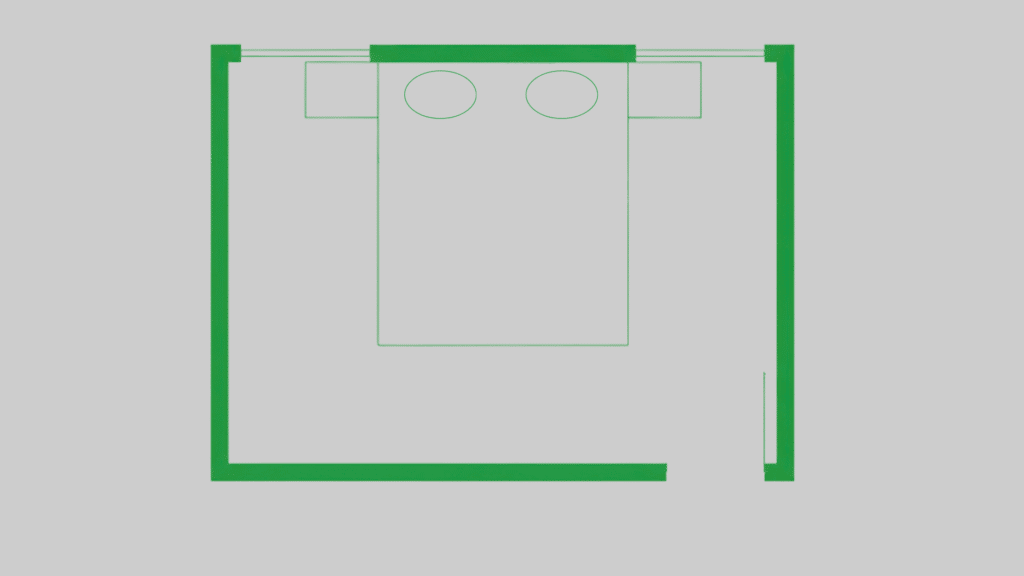
The 3-5-7 rule helps you in grouping decorative objects for the most visually pleasing and energetically balanced arrangements.
When displaying items on shelves, dressers, or nightstands, group them in sets of three, five, or seven. Odd-numbered groupings create visual interest than even numbers.
This applies to candles, picture frames, or any decorative objects in your bedroom feng shui design. The rule prevents your space from feeling messy while maintaining visual appeal.
Start with three items in a grouping, and add more only if your surface has enough space. This guideline helps you decorate rather than randomly placing objects around your room.
Bedroom Layout Ideas Based on Feng Shui Principles
Creating a harmonious bedroom starts with understanding how furniture placement and energy flow work together to promote restful sleep and wellbeing.
1. Position Your Bed in the Commanding Position
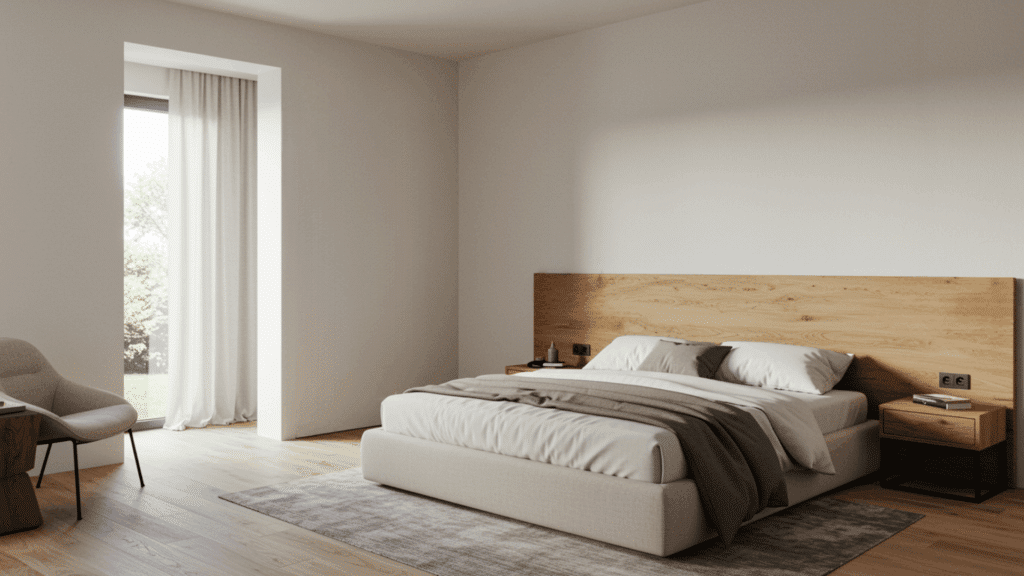
Place your bed where you can see the door without being directly in line with it. This diagonal placement gives you a sense of security in your personal space.
You should see anyone entering your room without turning your head completely, which helps you stay aware of your surroundings. It also prevents energy from rushing directly.
The commanding position represents power and authority in your own life, making you feel more confident when facing daily challenges.
2. Keep Space on Both Sides of the Bed
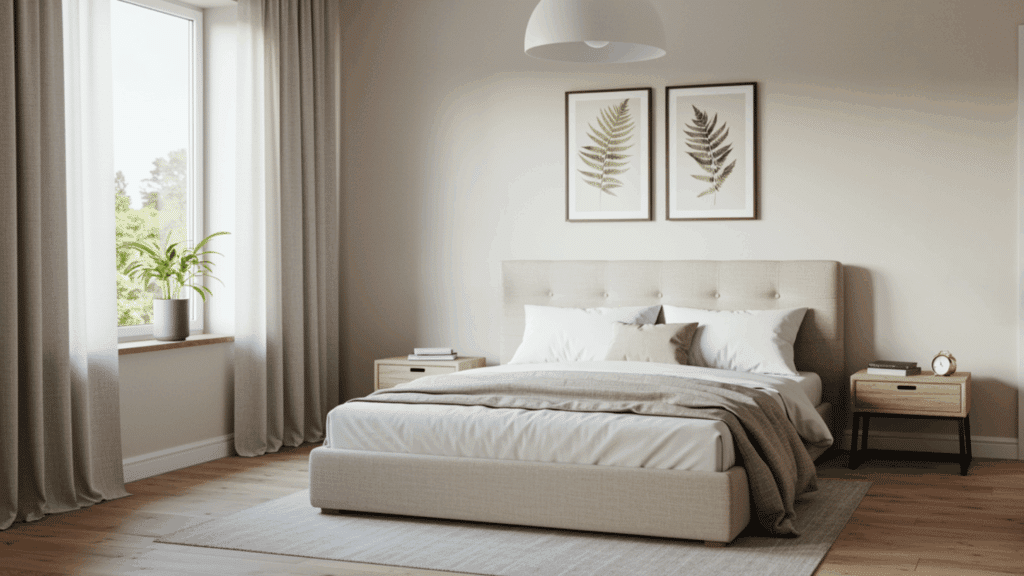
Create equal access to both sides of your bed by leaving walking space on each side for balanced energy flow.
This arrangement promotes balance in relationships and allows positive chi to circulate freely around your entire resting area.
The balanced approach supports equality and harmony in your personal life while making your room feel more spacious and inviting.
3. Use a Solid Headboard
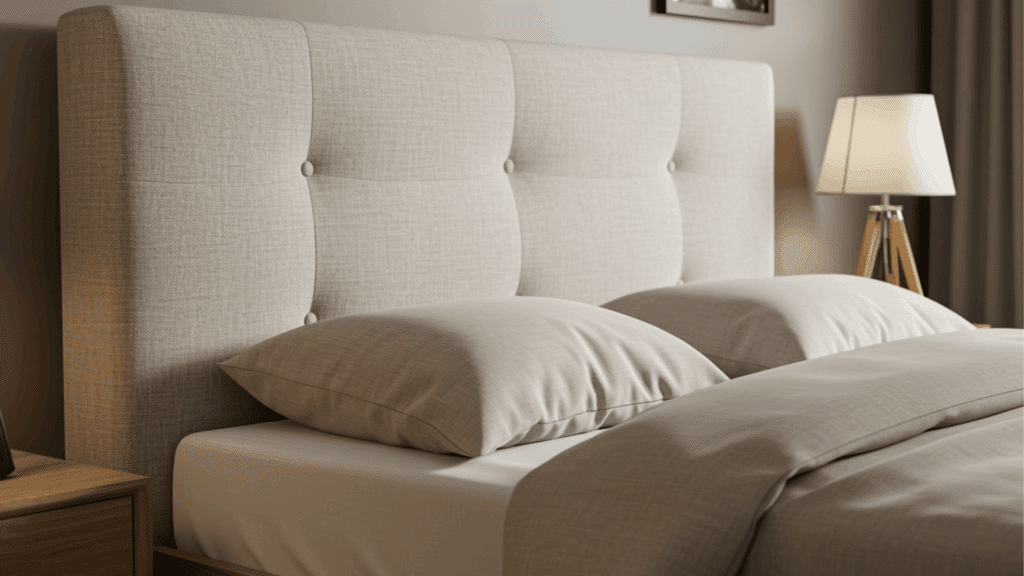
Choose a sturdy headboard attached firmly to your bed frame for support and stability in your feng shui bedroom layout.
The headboard represents support in your life and creates a sense of security while you rest your head each night.
Avoid headboards with bars or openings, as these can create unsettling energy and lack the solid backing you need.
4. Keep Electronics Away from Your Sleeping Area
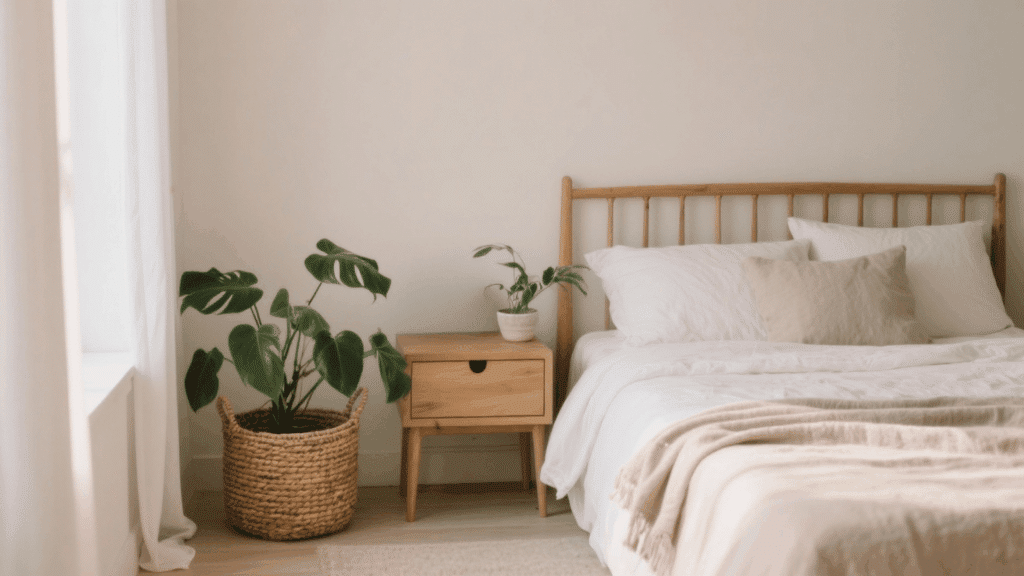
Remove televisions, computers, and other electronic devices from your bedroom or keep them at least six feet from your bed for better energy.
Electronics emit electromagnetic fields that can disrupt your natural rhythms and drain positive energy from your personal sanctuary.
If you must keep devices nearby, unplug them at night to minimize their energy use in your space. This change often leads to improvements in how refreshed you feel each morning.
5. Place Nightstands on Both Sides
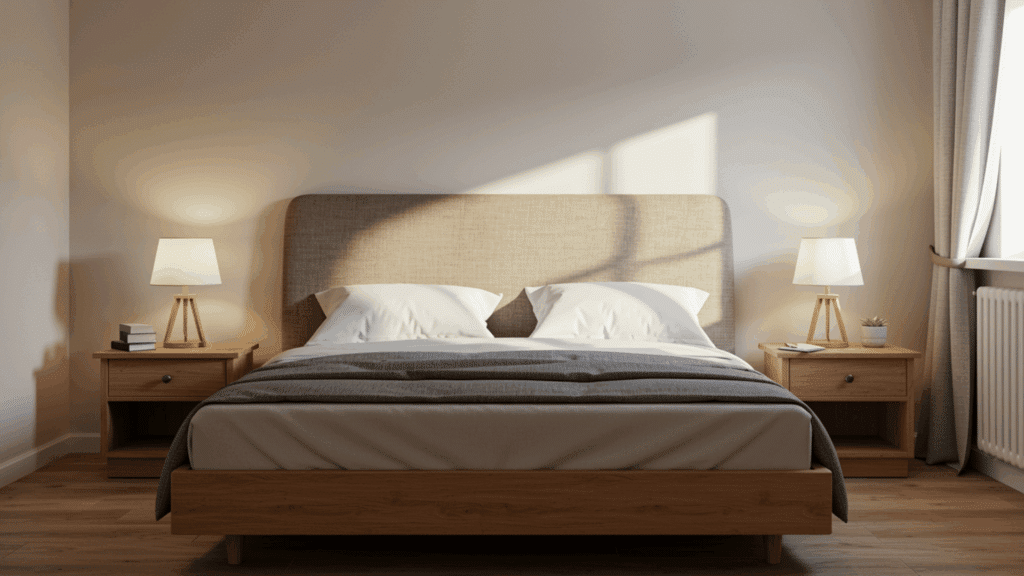
Matching nightstands on each side of your bed creates symmetry and balance in your feng shui bedroom layout that feels naturally harmonious.
They don’t need to be identical, but should be similar in height and style to maintain visual equilibrium. This arrangement supports partnerships that your eye finds pleasing.
Each nightstand should have a lamp to provide even lighting throughout your space and prevent dark corners.
6. Avoid Positioning Your Bed Under a Window
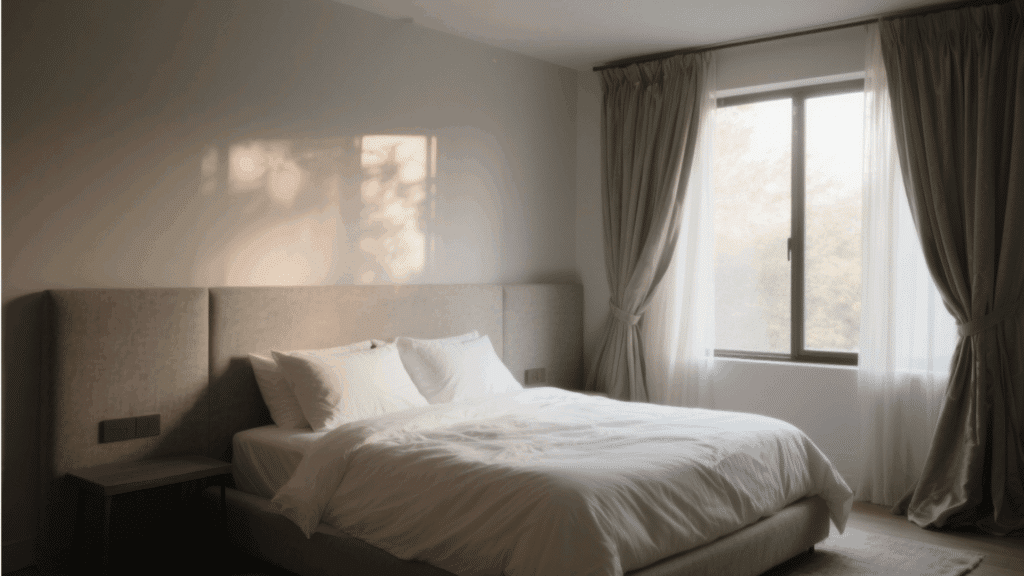
Windows are openings through which energy escapes, making the space above them unstable and unsupportive for your resting place.
When your bed sits under a window, you lack solid support behind you, creating subconscious anxiety about your vulnerability.
If you can’t avoid this placement due to room constraints, use heavy curtains or a tall headboard to create a protective barrier.
7. Remove Mirrors Facing Your Bed
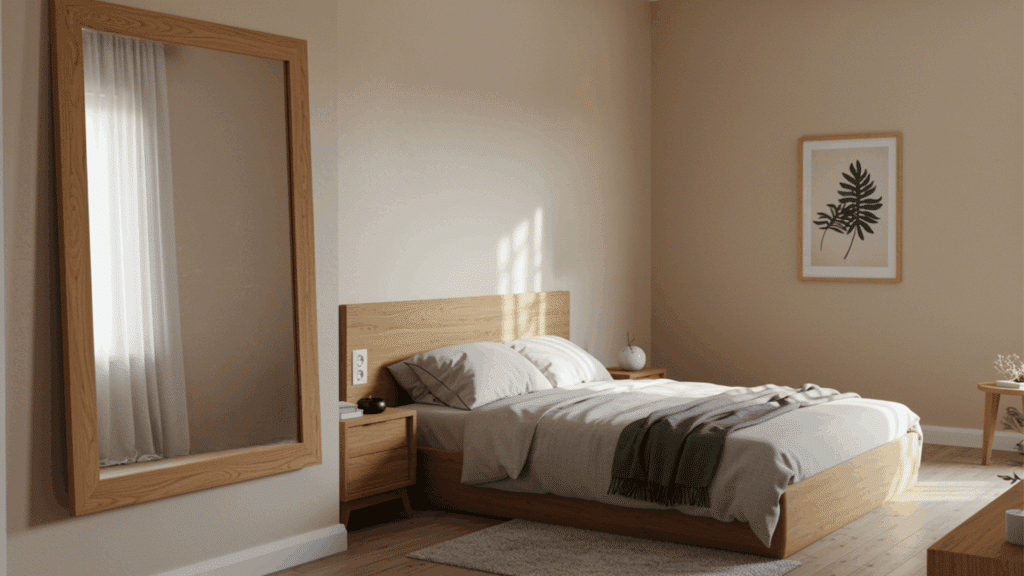
Mirrors reflecting your resting form can create restless energy and disturb your peace by bouncing chi around too actively.
In feng shui, mirrors amplify and redirect energy around the room, which isn’t ideal for creating a calm environment.
If you can’t remove bedroom mirrors entirely, cover them at night with fabric or position them where they won’t reflect your bed.
8. Clear Clutter from Under Your Bed
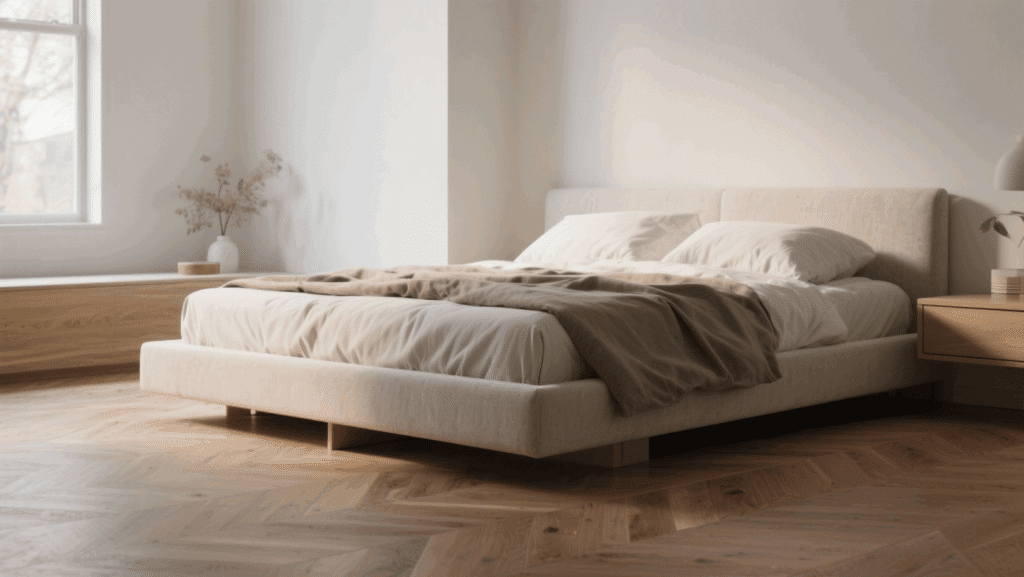
The space beneath your bed should remain empty to allow energy to flow freely around you throughout the night hours.
Storing items under your bed blocks this circulation and can lead to stagnant energy affecting your overall well-being and vitality.
If storage is absolutely necessary due to limited space, keep only soft bedding items like extra pillows or seasonal blankets.
9. Position Furniture with Rounded Edges
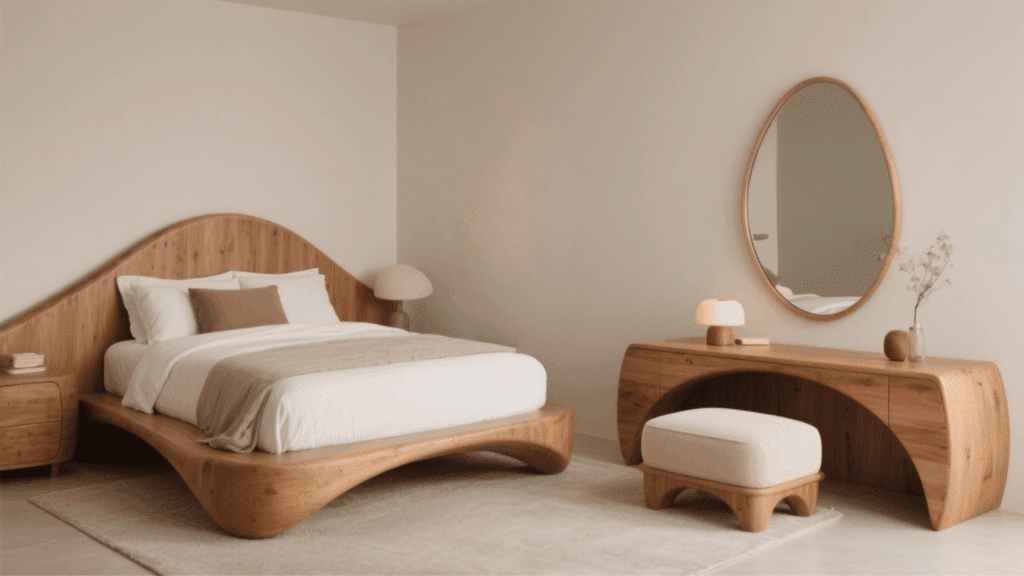
Choose bedroom furniture with soft, rounded corners instead of sharp angles pointing toward your bed or walking paths.
Sharp corners create what feng shui calls “poison arrows” that direct harsh, cutting energy toward you while you rest peacefully.
Round or curved furniture pieces promote gentle energy flow that feels more welcoming and nurturing in your personal space.
10. Create a Balanced Color Scheme
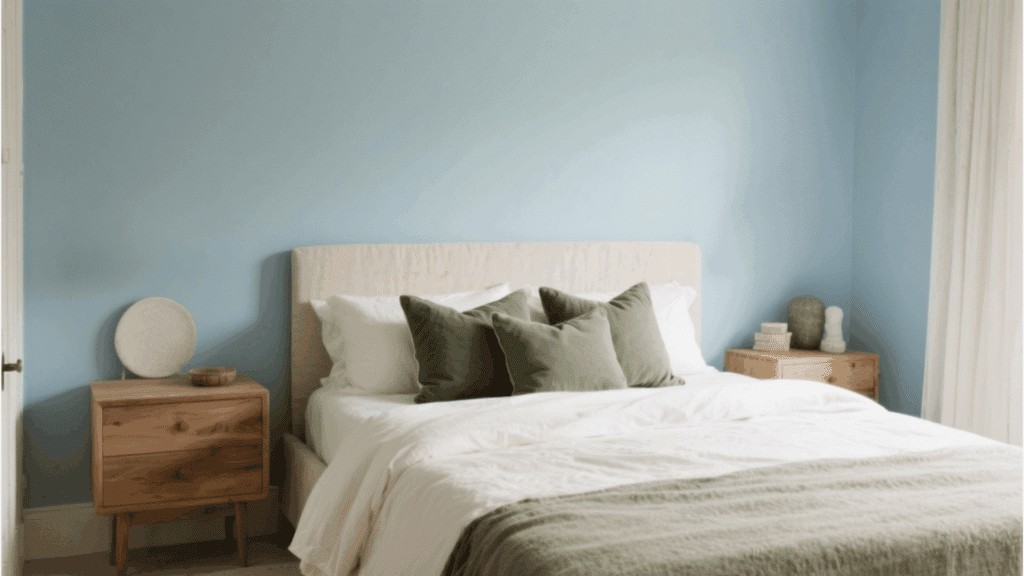
Select calming, earthy colors for your bedroom walls and bedding to promote relaxation and peaceful energy throughout your space.
Feng shui recommends skin tones, soft blues, gentle greens, and warm earth colors that connect you to nature’s soothing palette.
Avoid bright reds, intense oranges, or stark white, which can be too stimulating and activate rather than calm your energy.
11. Keep Your Bedroom Door Fully Functional
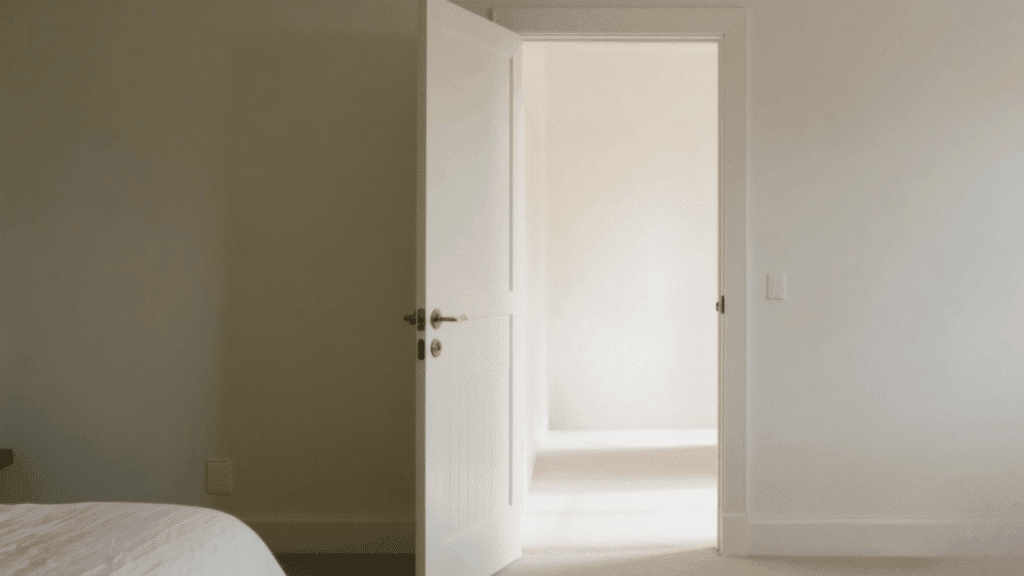
Make sure your bedroom door opens easily without hitting furniture or scraping the floor as it swings inward or outward.
A smoothly operating door allows positive energy to enter your space freely and signals that you welcome good opportunities into your life.
The door should open at least ninety degrees and stay in that position without effort or slowly creep closed on its own.
12. Add Plants for Living Energy

Incorporate one or two healthy plants in your bedroom to bring fresh, living energy into your space and connect with nature indoors.
Choose plants with rounded leaves rather than spiky or sharp varieties that can create aggressive energy in your peaceful retreat.
Plants purify air and add natural beauty that promotes calmness while softening hard surfaces and adding life to corners.
13. Limit Artwork to Peaceful Imagery
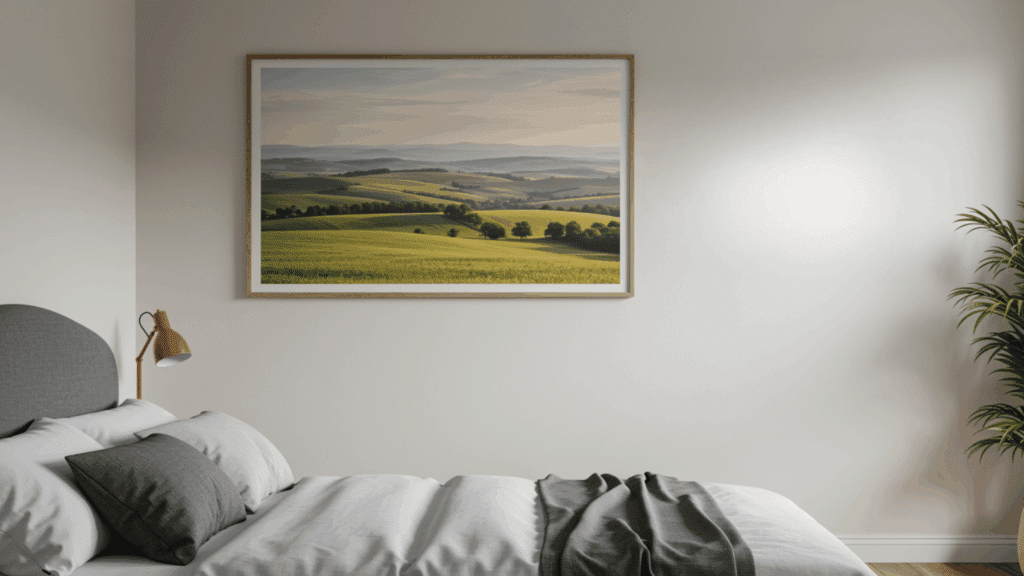
Display calming artwork that makes you feel relaxed and happy when you look at it throughout your daily routine in the bedroom.
Avoid images of water, which feng shui associates with financial loss in bedrooms, or pictures of loneliness, sadness, or aggression.
Pairs of objects in artwork support relationship harmony and balance, reflecting the partnership energy you want to maintain in your space.
14. Position Your Bed Away from the Bathroom Wall

Bathrooms carry water energy that drains positive chi from adjacent spaces, affecting your feng shui bedroom layout and energy levels negatively.
If your bed shares a wall with a bathroom, move it to a different wall when possible to avoid this draining influence.
If moving isn’t an option due to room size or layout, place a small mirror on the shared wall facing the bathroom to deflect draining energy.
15. Use Bedside Lamps Instead of Overhead Lighting
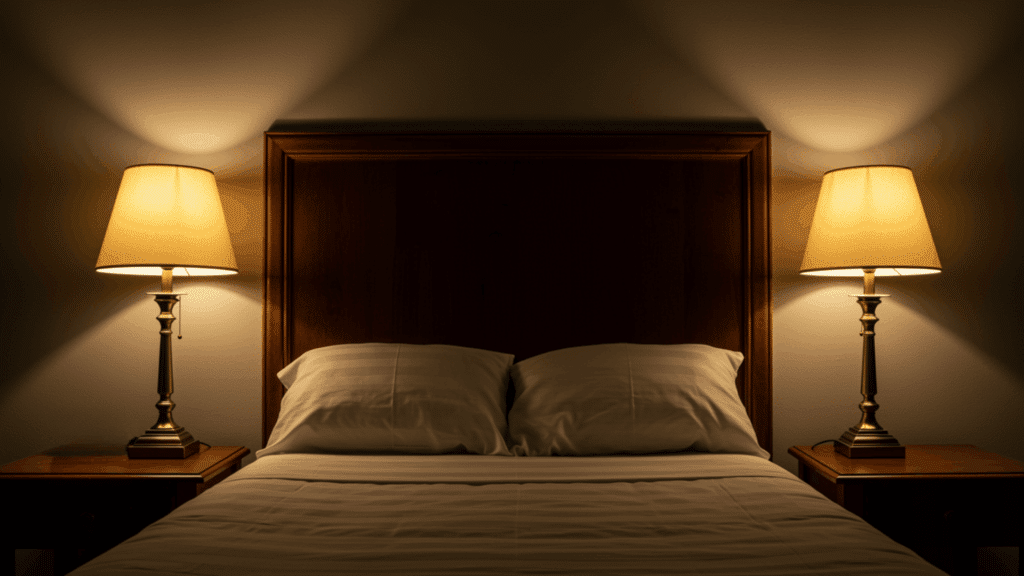
Install soft, warm lamps on your nightstands rather than relying on harsh overhead lights for your primary bedroom illumination source.
Gentle, adjustable light creates a more relaxing atmosphere for winding down before bed and helps you control your environment’s mood.
Overhead lights can create pressure energy above you while you rest, feeling heavy and bearing down on your personal space below.
16. Arrange Furniture to Create Clear Pathways
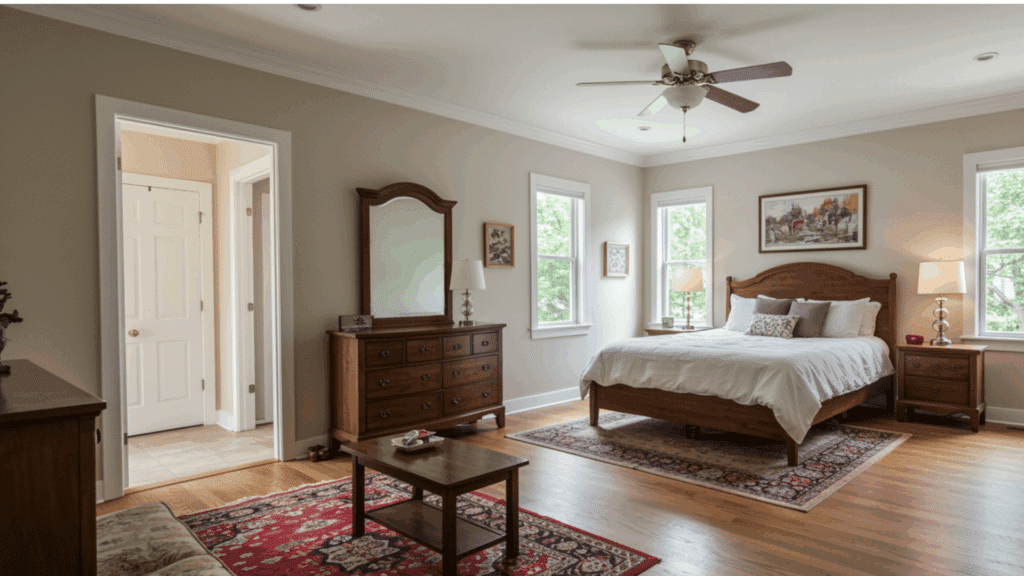
Organize your bedroom so you can walk easily from the door to your bed without navigating obstacles or squeezing between tight spaces.
Clear pathways allow chi to flow smoothly throughout your space without getting stuck in cramped corners or blocked by furniture.
Cramped, maze-like arrangements trap energy and create feelings of stress every time you enter or move around your personal sanctuary.
17. Add Soft Textures Throughout Your Space
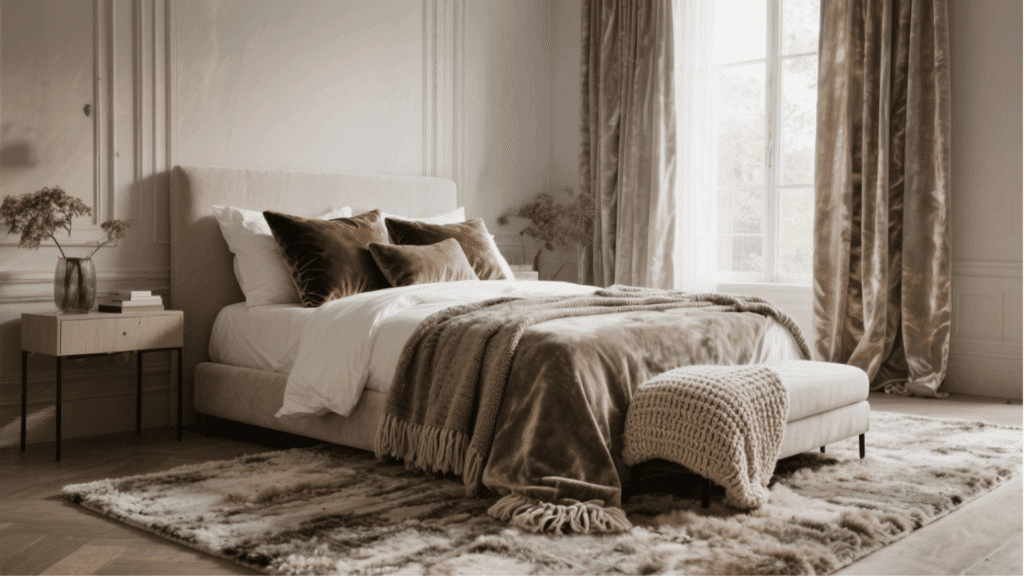
Include plush rugs, comfortable bedding, and soft curtains to create a cozy, nurturing environment that appeals to your sense of touch.
These textures represent the earth element in feng shui, which promotes grounding and stability in your daily life and personal experiences.
Soft materials absorb harsh energy and create a gentle atmosphere perfect for relaxation, self-care, and personal reflection in your space.
Pros and Cons of a Feng Shui Bedroom
| Pros | Cons |
|---|---|
| Promotes deeper, more restful sleep patterns each night. | Requires furniture rearrangement that takes time and effort. |
| Creates a calming environment that reduces daily stress. | May conflict with your current room design preferences. |
| Improves energy flow throughout your entire sleeping space. | Some guidelines feel restrictive for small bedroom layouts. |
| Supports better relationships through balanced bedroom arrangements. | Initial setup costs money for new organizational items. |
| Encourages regular decluttering that maintains peaceful surroundings. | Not all principles work practically in every home. |
| Brings intentional design choices rather than random furniture placement. | Results take time and aren’t always immediately noticeable. |
How Feng Shui Bedroom Provides Better Sleep
A feng shui bedroom layout creates an environment that naturally supports your body’s sleep needs through intentional design choices.
When your bed sits in the commanding position, your nervous system relaxes because you feel secure and protected.
The balanced arrangement of furniture and colors reduces visual chaos that can keep your mind active when you need rest.
Clear pathways spaces lower stress levels, making it easier to unwind at bedtime. These physical changes work together to signal your brain that your bedroom is for relaxation.
Over time, your body develops stronger associations between your bedroom environment and quality sleep, making falling asleep easier and staying asleep more natural.
Conclusion
Change your sleep space today by starting with just one or two feng shui bedroom layout changes you read about here.
These aren’t complicated rules requiring perfection, but flexible guidelines you can adapt to your unique space and needs.
Start with the changes that feel most important to you, even if that means repositioning your bed or clearing the mess underneath it.
Which change will you try first? Share your feng shui bedroom makeovers with us in the comments below!

